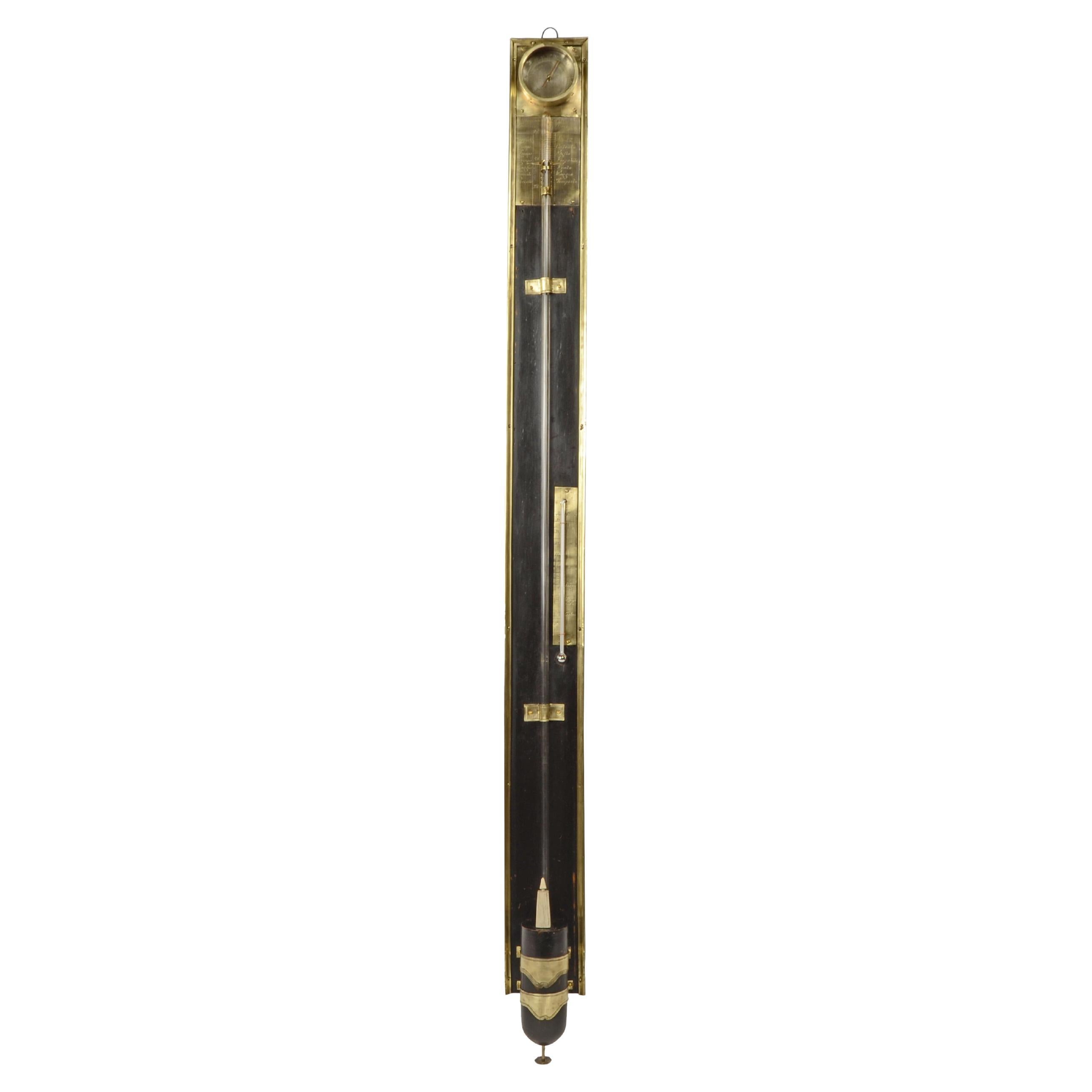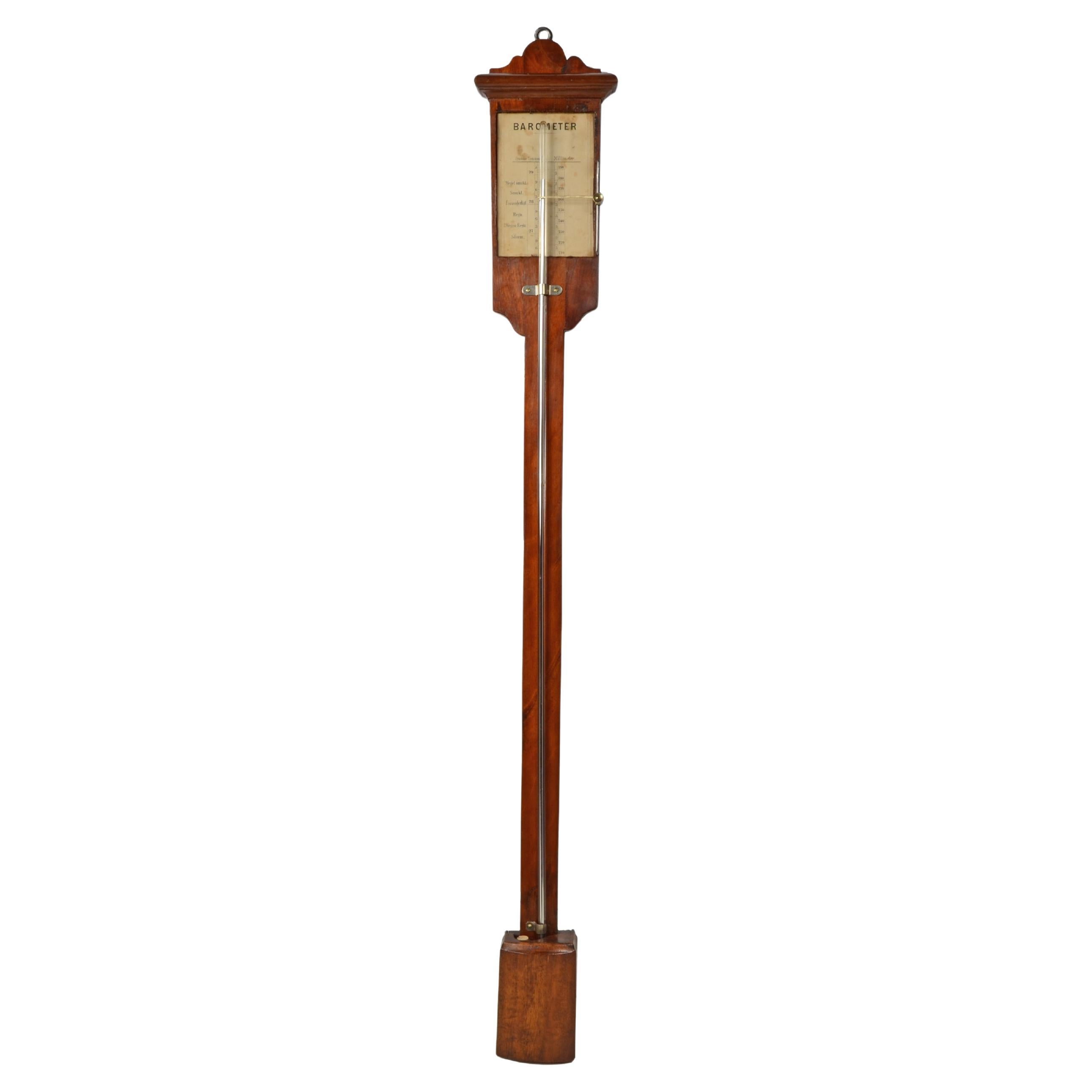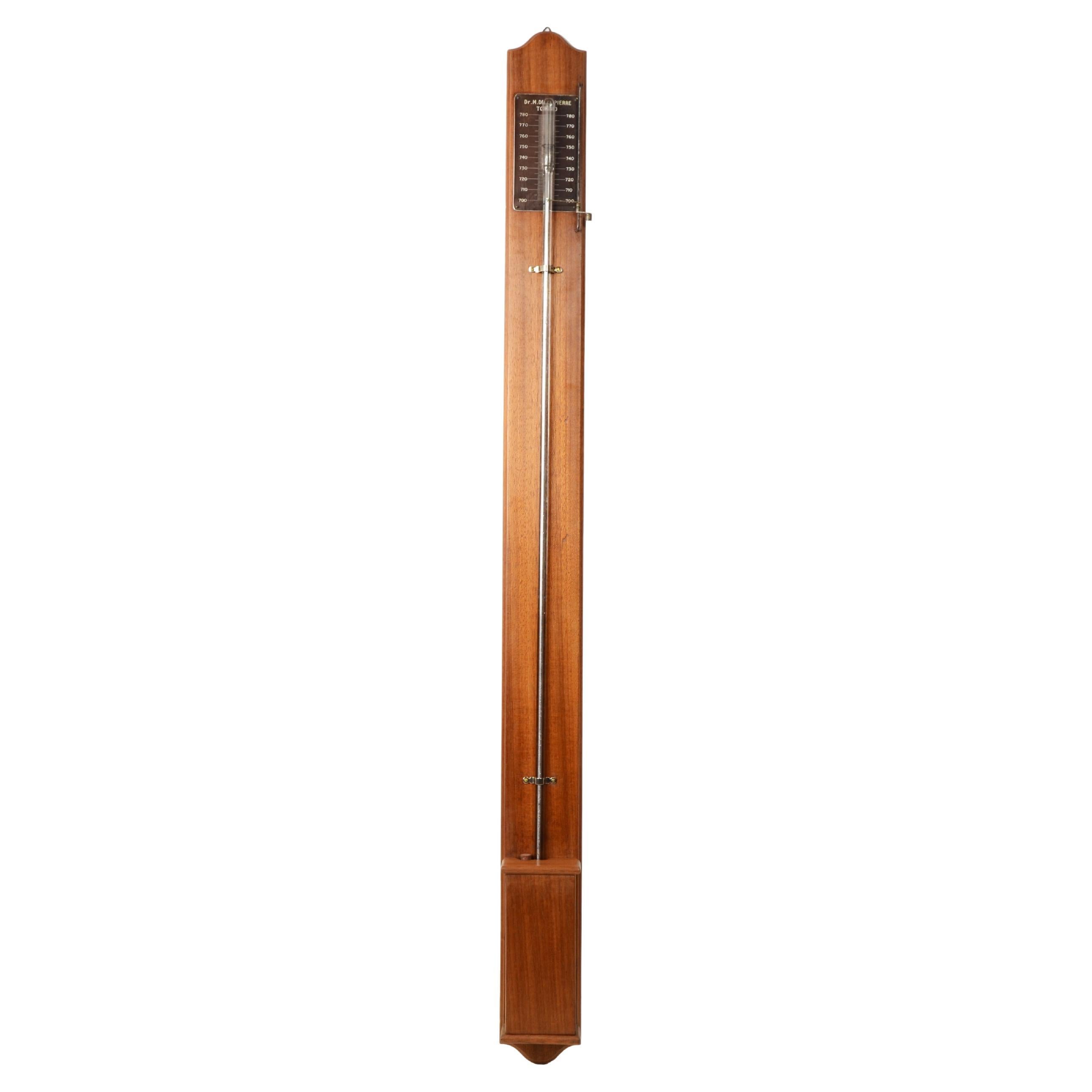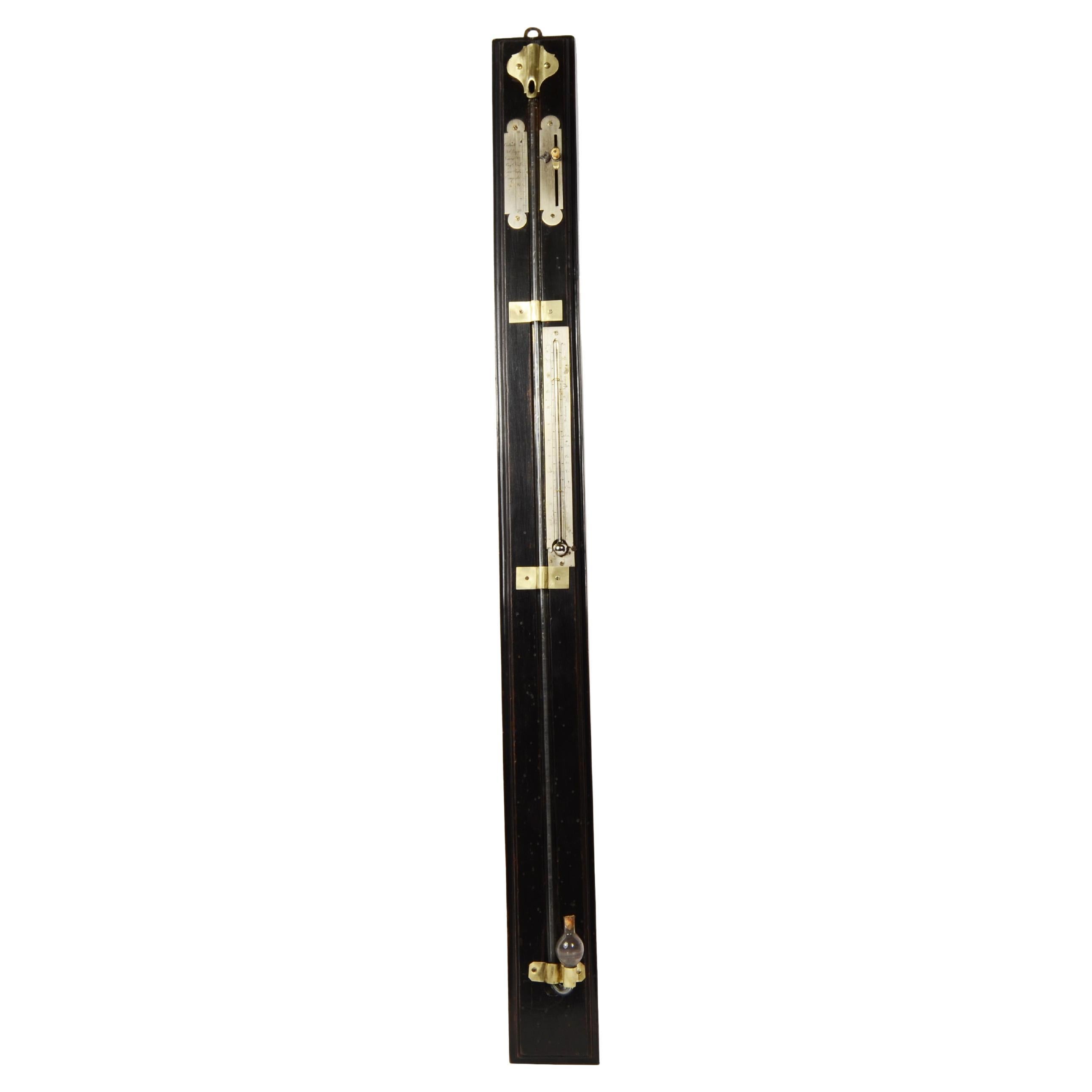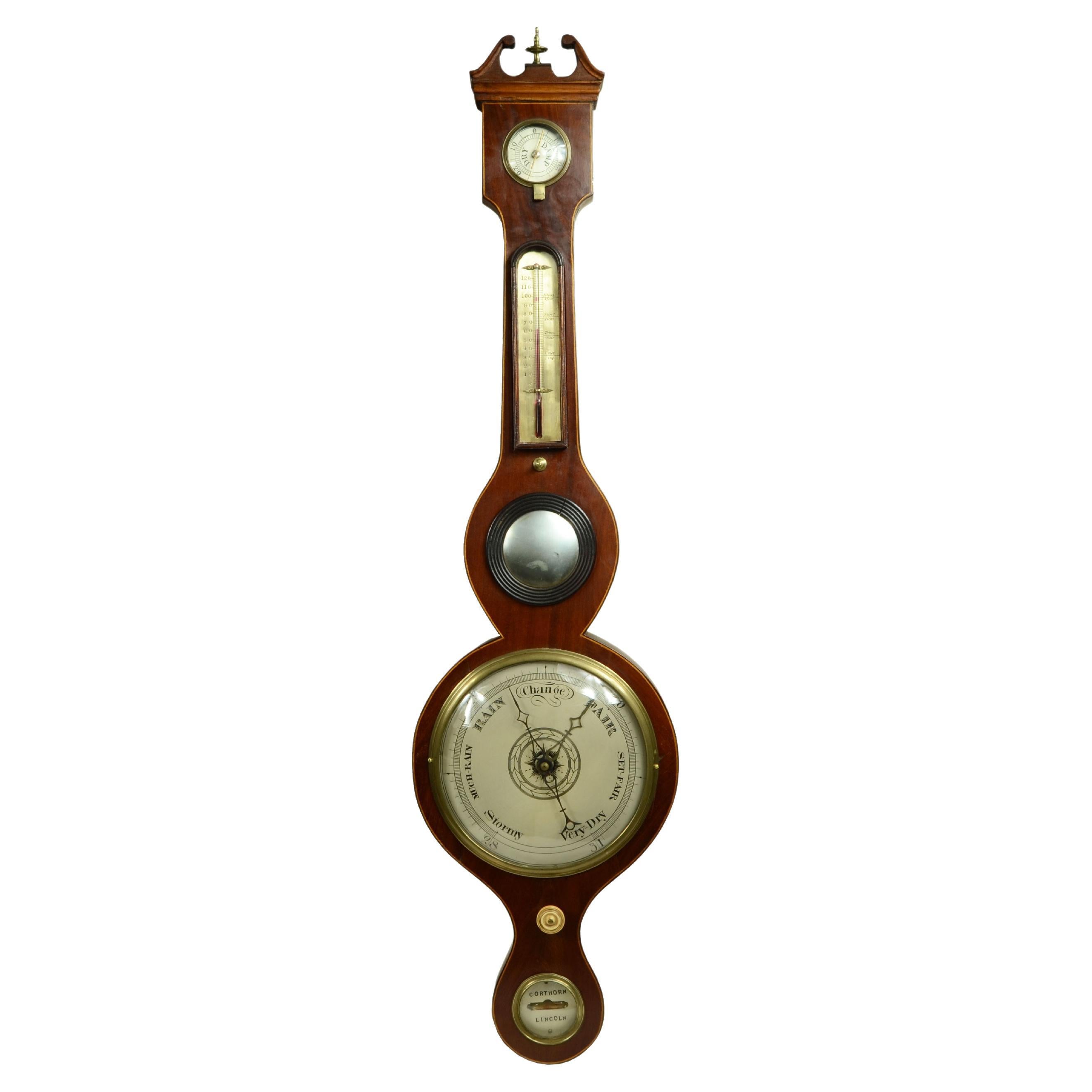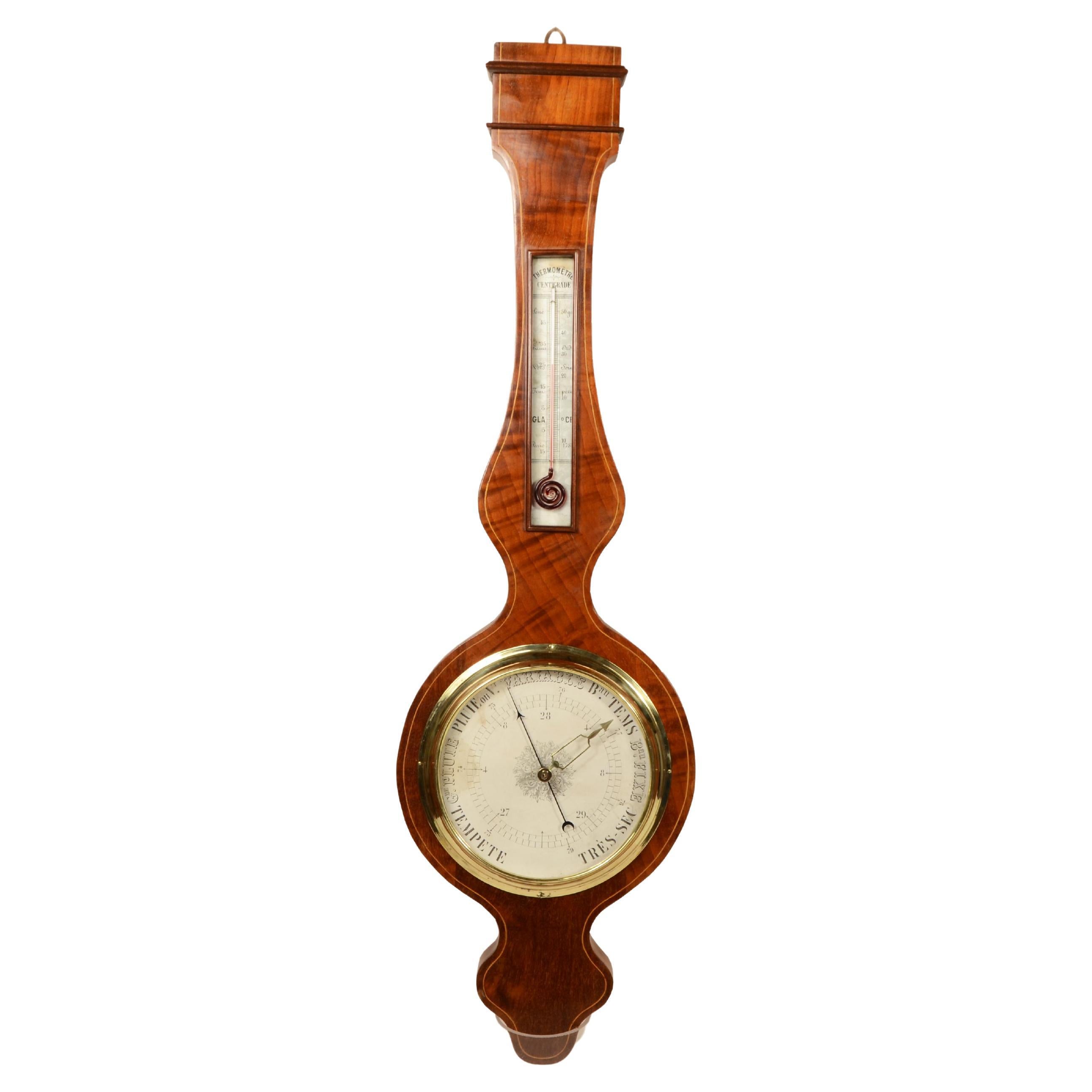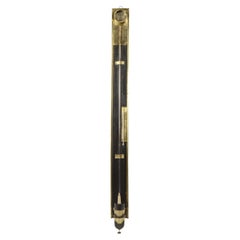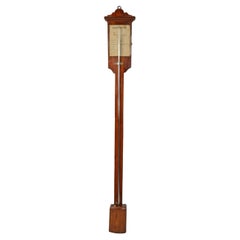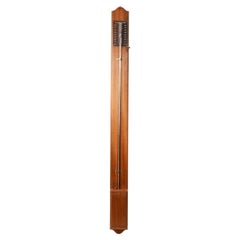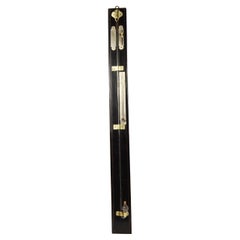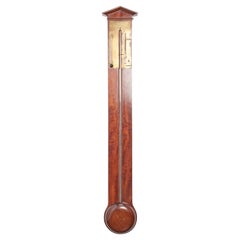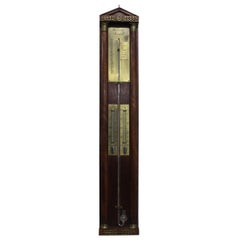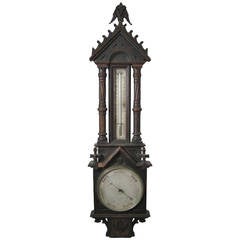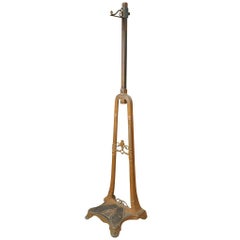Items Similar to Ebonized wood stick barometer signed TECNOMASIO ITALIANO circa 1870
Want more images or videos?
Request additional images or videos from the seller
1 of 16
Ebonized wood stick barometer signed TECNOMASIO ITALIANO circa 1870
$2,964.11
£2,212.10
€2,500
CA$4,138.49
A$4,513.74
CHF 2,373.14
MX$54,601.37
NOK 29,613.83
SEK 27,982.25
DKK 19,037.66
About the Item
Ebonized wooden stick barometer signed TECNOMASIO ITALIANO , from the second half of the 19th century.
Complete with reading nonius for atmospheric pressure change and mercury thermometer.
Good condition, fully functional.
Measures 17x5x99.5 cm - 6.7x2x39.3 inches.
For safety during transport, the barometer will be shipped emptied of mercury. The mercury will be placed in a sealed container in the package along with the barometer.
Evangelista Torricelli (1608-1647), mathematician and physicist, a disciple of Galileo, was the first in 1643 to build a measuring instrument capable of detecting changes in pressure Mercury was already known in antiquity to the Chinese and Hindus; it was found in Egyptian tombs dated around 1500 BC. By 500 B.C. its use as an amalgamant for other metals began. The ancient Greeks used it as a pigment for paintings, and the Romans employed it in cosmetics. According to medieval alchemists it was the matter from which everything else was formed, and they thought that once hardened it would turn into gold. In the 18th and 19th centuries, mercury nitrate was used to remove hair from hides used to make hats: this caused many cases of brain damage among those who made these headdresses, even leading to the coining of the saying "mad as a hatter."
Since ancient times man, as a farmer and navigator, has observed and attempted to predict weather patterns. The scientific study of the changes occurring in the atmosphere began in the mid-17th century in connection with experiments tending to prove the existence of a vacuum, which ancient philosophers denied since "nature abhors a vacuum!" If you fill a long tube with water and place it upside down in a bucket with water, the column of liquid will descend until its weight is counterbalanced by air pressure on the surface of the water in the bucket: at some point in the upper, closed end of the tube there will be a vacuum.
The company "Tecnomasio Italiano" optical and precision engineering workshop, was founded in Via Pace in Milan in 1863 by Luigi Longoni, the first director, civil engineer, mathematician and mechanic, a teacher in the Milan Polytechnic; by Carlo Dell'Acqua, a mechanical engineer and instrument maker; and by the famous optician and topographer Ignazio Porro, a teacher in the newly formed Milan Polytechnic, which soon withdrew by founding the Officina Filotecnica.
In 1871, engineer Bartolomeo Cabella, one of the first graduates of the Milan Polytechnic, at only twenty-four years of age and barely a year after being hired, became its director.
Under Cabella's leadership, the firm transformed from an esteemed manufacturer of precision instruments into a leading player in the national electromechanical industry by building the entire electrical power distribution system for the Esposizioni Riunite in Milan in 1894.
At the height of its expansion, the company was looking for land to build a larger factory, but, the advent of alternating current instead of direct current caused a crisis, which led to a merger with the Swiss company "Brown Boveri."
So it was that on November 15, 1903, the "Tecnomasio Italiano Brown Boveri," also known as T.I.B.B., was born in Milan.
After an initial settling-in phase, the search for suitable land to build a new plant was resumed, and the choice fell on an area of more than forty thousand square meters, outside Porta Romana, in an area that "it was possible to connect with a track to the nearby freight station"; the station, it was Porta Romana.
About the Seller
5.0
Vetted Professional Seller
Every seller passes strict standards for authenticity and reliability
Established in 1999
1stDibs seller since 2014
400 sales on 1stDibs
Typical response time: 2 hours
- ShippingRetrieving quote...Shipping from: Milan, Italy
- Return Policy
Authenticity Guarantee
In the unlikely event there’s an issue with an item’s authenticity, contact us within 1 year for a full refund. DetailsMoney-Back Guarantee
If your item is not as described, is damaged in transit, or does not arrive, contact us within 7 days for a full refund. Details24-Hour Cancellation
You have a 24-hour grace period in which to reconsider your purchase, with no questions asked.Vetted Professional Sellers
Our world-class sellers must adhere to strict standards for service and quality, maintaining the integrity of our listings.Price-Match Guarantee
If you find that a seller listed the same item for a lower price elsewhere, we’ll match it.Trusted Global Delivery
Our best-in-class carrier network provides specialized shipping options worldwide, including custom delivery.More From This Seller
View AllWooden stick barometer threaded brass at the edges John Maineri 1820
Located in Milan, IT
Ebonized wood cue barometer with brass threading at the edges, signed Giovanni Maineri early 19th cent.
Barometer with ebonized wood reservoir complete with sea bone float indicatin...
Category
Antique 1820s Scientific Instruments
Materials
Wood
Torricellian cue barometer on oak wood table Germany 1870
Located in Milan, IT
Torricellian mercury stick barometer on oak wood table, complete with atmospheric pressure reading nonius, late 19th-century German manufacture.
Measurements 13.5x4.5x 96 cm - inches...
Category
Antique 1870s Scientific Instruments
Materials
Wood
Torricellian batten barometer on mahogany board Mario de La Pierre Turin
Located in Milan, IT
Torricellian mercury stick barometer on mahogany wood board, signed Dr. M. De La Pierre Torino, from the 1950s, complete with atmospheric pressure reading nonius.
Measures 7.5x4.8x ...
Category
Mid-20th Century Scientific Instruments
Materials
Wood
Stick barometer signed Scalvino Milano from the first half of the 19th century
Located in Milan, IT
Batten barometer signed Scalvino Milano from the first half of the 19th century, made of ebonized wood.
Complete with reading nonius for atmospheric pressure change and mercury therm...
Category
Antique 1830s Scientific Instruments
Materials
Wood
Torricellian mahogany barometer signed Corton Lincoln mid-19th cent.
Located in Milan, IT
Torricellian mercury barometer in mahogany wood, signed Corton
Lincoln of the mid 19th cent. complete with reading nonius for checking pressure variation, alcohol thermometer, hyg...
Category
Antique Mid-19th Century Scientific Instruments
Materials
Wood
Torricellian barometer French manufacture from the second half of the 19th century
Located in Milan, IT
Torricellian mercury barometer, French manufacture from the second half of the 19th century, made of mahogany veneer wood with cedar wood edge threading complete with rare thermomet...
Category
Antique 1870s Scientific Instruments
Materials
Wood
You May Also Like
A barometer signed jecker, Paris 1800.
Located in Milan, IT
Antique mahogany wall barometer composed of a glass tube containing mercury with its reserve. On the upper part a gable-shaped pediment and a screwed brass plate with a small alcohol...
Category
Antique Early 19th Century French Scientific Instruments
Materials
Brass
French Late 19th Century Barometer
By Selon Torricelli
Located in Stockbridge, GA
French late 19th century barometer.
Category
Antique Late 19th Century French Empire Scientific Instruments
Materials
Bronze
Negretti and Zambra Aneroid Barometer, 19th Century
Located in Hamilton, Ontario
19th century Negretti & Zambra aneroid barometer.
Large English oak, Gothic style barometer.
Free shipping within the United States and Canada.
Category
Antique 19th Century Great Britain (UK) Gothic Scientific Instruments
$1,995 Sale Price
20% Off
19th Century Italian Height Measuring Apparatus
Located in Round Top, TX
An intriguing 19th century Italian apparatus for measuring one's height in centimeters. Soundly constructed from cast iron with a bronze measure to one side. A whimsical accent perfe...
Category
Antique Late 19th Century Italian Scientific Instruments
Materials
Bronze, Iron
Orologio a pendolo vintage da tavolo
By Mice di rugiano domenico e c. s.n.c.
Located in Cantù, IT
Orologio a pendolo vintage da tavolo
Category
1990s Italian Other Grandfather Clocks and Longcase Clocks
Materials
Wood
Elegant octagonal empire column bedside table
Located in Cesena, FC
Elegant empire column nightstand, octagonal.
Origin: emiliana (Bologna)
Empire-era (early 1800s)
Entirely veneered in poplar burl with a special stain that enhances the intricate gr...
Category
Antique Early 19th Century Italian Empire Night Stands
Materials
Poplar
